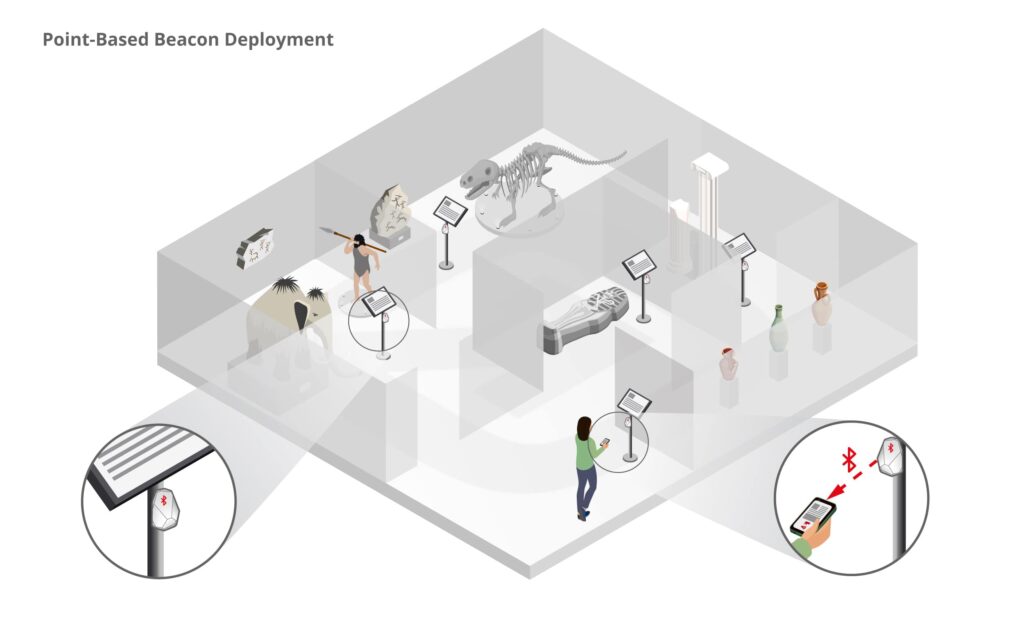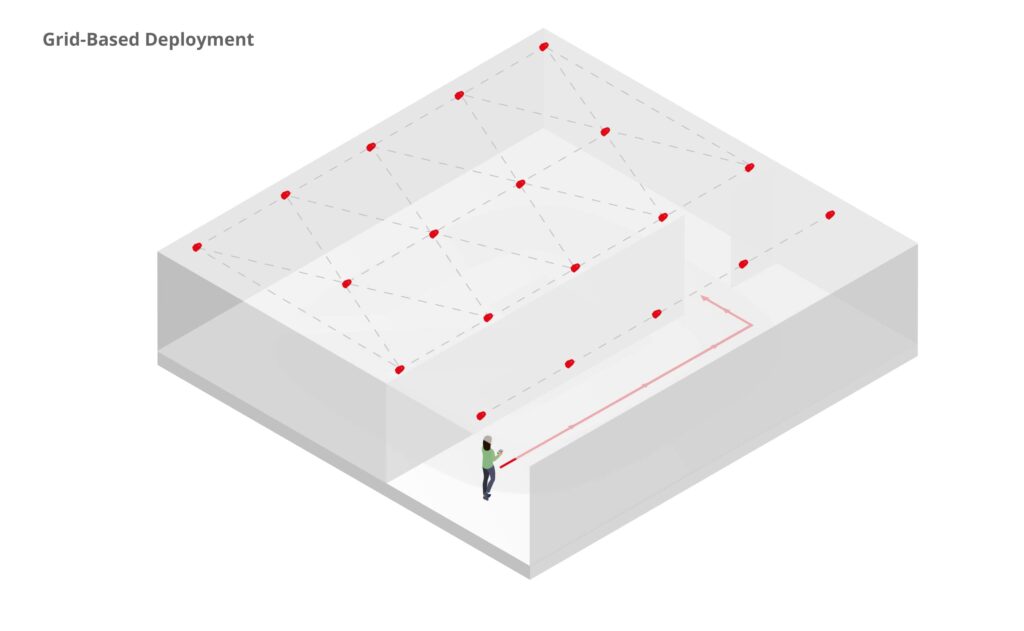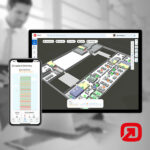Are you planning to implement Bluetooth Low Energy Beacons in your company? Then it is important to know which beacon strategy is required for your company. A clear definition of your goals is the first and most important phase in planning. This is where the decision is made as to whether the project is to be carried out successfully and in line with requirements.
Deciding which type of beacon is required is the basis for further planning steps. On this basis you determine the necessary number of beacons, calculate the project costs and can determine the placement of the beacons.
In this blog post we want to help you understand the two types of implementation and work out the differences. With this information you should be able to select the type of installation suitable for your company. Basically, we distinguish between two types of use: Point-Based and Grid-Based. Which of the two you choose depends on which task the beacons are to perform.
POINT-BASED BEACON DEPLOYMENT
With point-based deployment, you install the beacons exactly where you want to interact with the customer. This strategy is used to address the user at specific locations or points or to provide location-related information. An example of the use of point-based beacon provision is the playout of ads or presence information.
In point based betting, the number of beacons is cut exactly to the points of interest. These can be exhibits in a museum, shop shelves, entrances to a building, etc. Decisive for the number of required beacons is the range and size of the object.
We only recommend the use of point-based beacon installations to a limited extent: Interactions are dependent on a single beacon. If the beacon is defective, actions can no longer be performed without redundancy.
GRID-BASED BEACON DEPLOYMENT
This method is used when a larger area is to be covered by beacons. For example, a company needs a grid-based solution to provide indoor positioning, analysis, navigation or a configurable environment for area-based alerts. This type of deployment requires that you cover the entire area with multiple beacons so that your application can calculate the exact location of the user using trilateration.
To cover your destination with beacon signals for grid-based use, the number of beacons required depends on the area of the room and the number of obstacles to signal propagation. With a grid-based application, you must ensure that each point within the room to be monitored is ideally covered by three beacon signals. Otherwise, it is not possible to determine the exact position. To determine the necessary number of beacons, you should measure the room and create a floor plan with all objects. The range of the beacons should be determined individually on the basis of this floor plan.
With infsoft Beacon Management we provide our customers with a tool with which they can easily plan beacons in the relevant areas. For example, if you want to cover a 20-25m corridor with beacons, you need three. They are installed at a distance of 7-9 m. For a room with an area of 2500 sqm a number of about 30 beacons is necessary, depending on the nature of the environment. More detailed information can be found in the Beacon Calculator on our homepage.
In principle, we recommend that the transmission power of the beacon be set rather lower and that the installation density be increased, so that a tighter meshed network with a resulting higher position accuracy is created.
We are happy to help you find a solution that works best for you – don’t hesitate to get in touch.








